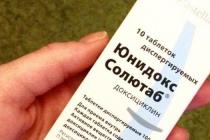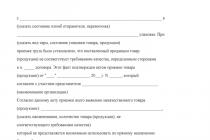Insulation of the foundation is necessary solely to reduce the forces of heaving or comfortable operation of the underground floor. Pile foundations that fall below the freezing mark are not afraid of heaving forces. In principle, there cannot be a basement floor in these structures. The underground pile foundation is not heated, the ground freezes completely. Therefore, there is nothing to warm here.
Statistics show that in 5% of cases underground cottages located in areas with a serious elevation difference are operated in the mode of a workshop, utility room. In this case, a heating device is installed here, the intake is insulated using the technology of a ventilated facade.
However, in the absence of an insulated floor, heating costs are enormous, and high-quality ventilation is necessary. Otherwise, evaporation from the soil will lead to the destruction of the floors of the first floor, other structures of the building's load-bearing frame. For the same reason, it is not recommended to store/storage lumber underground.
Pile foundation design
Screw piles are chosen for light buildings or under difficult operating conditions. Bored piles save the construction budget. Low grillages are either immersed in the ground, or start from its surface, protecting the floor of the lower floor from blowing. Hanging grillages are an unprotected underground, which developers who do not have practice and specialized education are trying to insulate.
When using a hanging grillage, it is impossible to make a floor on the ground. In 90% of cases, floors are used on logs, which can be insulated with basalt wool on the subfloor. The work is carried out from the inside, they have nothing to do with the insulation of the pile foundation.
Why is it impossible to insulate a pile foundation?
Regardless of the type of thermal insulation material, each of them is designed to keep the heat in the room. There is no pile foundation in the underground, no heaters, no warm air, therefore, insulation is impossible in principle:

Insulation of cold air masses is literally money down the drain. However, excessive ventilation cools the floors from below, increasing the operating budget, storm water, flood waters get under the building, evaporation damages the power frame of the house.
The problem is solved by the design of the false base, which is called the pick-up. It is made by laying in half a brick or facing with basement siding of a frame fixed on pipes of a pile foundation. However, it is necessary to leave ventilation vents in it to ventilate the underground.
What needs to be insulated in a cottage on a pile foundation?
Having determined that it is not necessary to insulate the pick-up, it is necessary to pay attention to the communication input nodes. Pipelines of the water supply system, drainage systems, insulation is required without fail. Liquids have, albeit low, but positive temperature, which must be maintained with several layers of insulation inside the foundation underground, underground to the freezing mark in the region.
Water supply pipeline entry unit
The cold water pipe passes below the soil freezing mark, after which it rises to the base of the building, passes through the underground air to the floor. The insulation of this engineering system occurs in the following way:

In practice, the heating cable is used along the entire length of the pipeline, guaranteed to protect communications from freezing.
Sewer exit node
Sewer insulation is simpler, cheaper than the previous case. Drains at the exit from the dwelling have high temperature, cannot freeze when passing through the foundation underground. Therefore, underground they are protected with shells, in the air they are wrapped with one layer of basalt or glass wool. 
The gas line is not afraid of frost, it makes no sense to insulate it. The same applies to the power supply cable.
Slab grillage on piles - an exception to the rule
The pile foundation requires insulation in the only case - a monolithic slab grillage along the heads of the SHS or bored piles. When choosing this technology on a flat area without a height difference to save the construction budget, reduce labor costs, the slab is cast into the formwork on the ground. The developer gets rid of the lower formwork panels (which are extremely difficult to dismantle later), while receiving loads from heaving forces that can tear the grillage slab from the piles. In this case, the insulation technology has the form:

Stiffening ribs on the sole of the slab grillage are not needed. The input of communications is carried out before the manufacture of the foundation cushion. The blind area is insulated with polystyrene foam at the level of the sole of the slab, protecting it from lateral freezing. Communications do not need to be insulated, unlike other grillage foundations.
This technology is too expensive and rarely used. Pickups of prefabricated grillages (beam or I-beam) on screw piles, monolithic in bored piles no need to warm up. Enough waterproofing facing material at ground level.
IN general view is a screw pile connected over the piles with a grillage. In the inner contour of the foundation, the floor of the first floor is made.
The pile foundation is insulated by insulating the grillage and the floor of the first floor. Piles themselves do not insulate, regardless of soil and climatic conditions.
The grillage can be low and high - in both cases, the outer surface of the grillage is insulated to its entire height. And also insulate the bottom of the grillage, as shown in the figures below:


In the inner contour of the foundation, the floor of the first floor is arranged. This floor is usually performed in three versions: concrete, wooden floor along the logs or the concrete floor of the first floor along the floor slabs. Consider how to perform the insulation of a pile foundation with all three types of floors.
Insulation of a pile foundation with a concrete floor on the ground
The floor, made according to this scheme, is insulated, as shown in the figures, under the finishing screed:



Insulation of a pile foundation with a floor on floor slabs


How to insulate a pile foundation
Let's describe all the types of grillage and floor given above and the material for their insulation.
Both low and high grillages are insulated with EPPS (insulation thickness calculated for a specific region, but not less than 50 mm).
The floor on the ground is insulated either with EPPS or with foam plastic, density 30 kg / m3.
The floor along the logs is insulated with mineral wool, density 30-60 kg / m3 (insulation thickness according to the calculation for a particular region)
The floor on the finished factory plate is insulated from below with EPPS (the thickness of the insulation according to the calculation for a particular region). The floor on the finished factory plate is insulated from above with EPPS or foam plastic, density 30 kg / m3 (insulation thickness according to the calculation for a particular region).
No building can be built without laying the foundation. The foundation is the foundation of the building and must also be insulated to keep the heat in the premises. In this article we will talk about the insulation of the pile foundation.
Reasons for insulating the base of the house
There are a number of reasons that indicate that insulation is required not only for the building, but also for its foundation. Consider them:
- As mentioned above, one of the reasons is the heat of the building itself. Insulation of the foundation of the building will create additional heat for the building, in addition, here you can create a cozy cellar and store wine and canned food in it every year. Also on the basement floor you can arrange a garage, a swimming pool or, for example, install a billiards;
- Basement insulation will add additional space to the house, which can be used for domestic purposes;
- Insulation of the foundation will not allow the basement to freeze during the long winter, and with the onset of heat, condensation will not form here.

Insulation of the pile foundation of the house
In buildings where a columnar foundation is laid, the floors often freeze through during the cold season. This is due to the open space under the building. In this regard, the question arises, how to insulate the pile foundation? Finding the right type of insulation for this type of foundation is very difficult. Here it is necessary to take into account the peculiarity of the constructed building, namely the height of the base pillars and their material. However, there are only two options.
- One of the options involves the installation of a frame around the entire perimeter of the building, which must be sheathed with facing material. So you can organize the insulation of the pile foundation from the outside. The resulting object can be adapted for economic needs. The disadvantage of such insulation is that it will take a lot of time, financial costs and material, especially if the floor is high enough in relation to the ground. But this is the most best option insulation of the foundation, if the distance between the floor and the ground is not very large.
- The second option involves floor insulation with a pile foundation, and not the foundation of the building. This option is suitable for buildings where there is a very large space between the floor and the ground. As a heater, you can take polystyrene foam (polystyrene foam). The most important thing is to properly fix the material. It should dock with adjacent layers closely. If necessary, you can lay the foam in two or three rows. Between each layer it is necessary to lay waterproofing.
It is best to insulate the base of the building from the outside of the building, but if this is not possible, in this case it can be insulated from the inside. The optimal solution is to insulate the base of the house on both sides, but this is far from affordable for every construction.
Insulation of the foundation of the outer part of the house
Foundation tape type it is better to insulate at the initial stage of the building structure. It is very difficult to insulate a built house, since it will be necessary to open everything and clean the foundation from the soil. When opening, you can damage the foundation, which is highly undesirable. To insulate the base, the following materials will be required:
- Bituminous mastic;
- Styrofoam (polystyrene foam);
- Cement;
- Fasteners for fixing insulating products.
First of all, you need to cover up all the existing cracks and crevices. Bituminous mastic is applied to a flat surface. It is processed about 20 cm from the ground up. After the mastic has dried, it will be possible to fix the insulation. Best Option- Insulation with expanded polystyrene. It has strength and durability, and it also retains heat very well. For fastening, you can use a certain mixture to fix the material or fixatives - fungi.

The resulting seams can be closed with a masking net and covered with a layer of mortar mixed with cement. Treating the surface of the walls with mastic will help protect the outer layers of the base from moisture.
To create heat in the basement, a concrete floor is recommended.
The method of warming the base of a wooden house
Some believe that in wooden houses no need to insulate the foundation. But no matter what kind of wood was used to build the house and what treatments it was not subjected to, it must be protected from all kinds of influences on it. Styrofoam is used to insulate such houses. Alternatively, the base can still be overlaid with bricks.
The pile foundation is used in cases where the soil is weak enough and cannot withstand a large load. For the construction of modern buildings, screw piles are more often used. At the end of the construction process of such a foundation, it must be insulated.
What needs to be insulated?
When insulating the base of the house, all rules and regulations must be observed.
Pile insulation - screw foundation- this is a kind of external insulation grillage. It is important to make sure that building products for insulation do not absorb moisture.
As a heater, you can take any material. Today, a wide range of thermal insulation products is presented on the building materials market. They differ from each other only in the brand, characteristics and thickness of the building product.
You can choose a material that has water-repellent properties. If a material capable of absorbing moisture is used, then it is recommended to cover it with a certain moisture-proof layer.
What happens if you do not protect the insulation with a moisture insulator?
The insulation not covered with a moisture insulator will eventually collapse, while the foundation of the house will gradually deteriorate.
The main enemy of damage is corrosion. Due to the constant moisture content on the insulation, the reinforced concrete structure will eventually begin to become covered with a corrosive layer, which will subsequently lead to the destruction of both the foundation of the house and the building itself. This applies not only to reinforced concrete structures, but also to other material made of metal.
Warming process
Stages of insulation of the base of the building:

- The insulation of the pile-screw foundation begins with the waterproofing of the grillage, which will help provide the roofing material. It must fit between top grillage and the bottom of the house structure. It is also laid between the bottom of the grillage and the end of the pile. A water-repellent mastic is applied to the open surfaces of the piles and the grillage.
- At the second stage, the covering of the heat-insulating material is carried out. They are covered between the lower part of the grillage and the first floor of the building.
If for some reason it is not possible to cover the base with insulating material, you can fill in the soil around the entire perimeter of the base of the house. This kind of thermal insulation is not effective enough, and the process of insulation itself requires a lot of time and effort. In this way, only external insulation of the foundation can be made.
Do-it-yourself external insulation of a pile foundation can be carried out using a profiled sheet. The profiled sheet is able to retain heat and protect the insulating material from various influences on it. The profiled sheet must be attached to the frame fixed at the top of the piles.
Materials used for pile insulation
Styrofoam is often used as a heater. It is easy to fix, and most importantly, it has a fairly low cost, which is important for any construction.
To fix the foam, a special adhesive solution and bituminous mastic are used. It is applied in a measured layer on the surface of the grillage.
Moisture resistant insulation
If you turn your attention to heaters that can repel water in time, you can save a lot on the insulation of the foundation. Waterproof materials include:
- Airgel;
- Foam glass;
- Extruded foam (polystyrene).
By timely covering the base of the house with such insulation, you can not only save money, but also avoid unpleasant surprises, in the form of corrosion on the foundation structure or the gradual destruction of the building.
Insulation of a pile-grillage foundation is not only the comfort and coziness of your home, but above all, the health of you and your family. As follows from the laws of physics, all the heat of the house always accumulates under the ceiling, therefore, the floor is always cold without that, not to mention the foundation of screw piles. By approaching the construction and insulation of your house more seriously, you will not only preserve health, but also prolong the life of all its inhabitants.
30.07.2008, 11:45
The gist of the question is this:
we have: - TISE pillars;
- grillage on these same pillars.
The insulation of the foundation is not in doubt. :wink:
Doubts torment about the heater itself.
I dig in, which means, along the grillage (vertically) of the DSP - this is understandable. :lol:
Next, I must (according to the rules) install a heater - the question is: which one?
2. Or something else? What?
3. Doubts?
4. get wet?
Thanks! :D
Can anyone have a photo of how IT looks alive !!! :lol:
30.07.2008, 12:37
30.07.2008, 22:24
Isn't it necessary to insulate to reduce heat loss through the floor and basement?
Andrew teacher
31.07.2008, 00:26
Next, I must (according to the rules) install a heater - the question is: which one?
I have "Isorok" (50 mm plates).
1. Does mona use it?
2. Or something else? What?
The question is: how will the insulation behave in the ground?
3. Doubts?
4. get wet?
5. Do you need any foundation under it or will it just go to the bottom of an open trench?
6. Do I need to somehow waterproof it? For example, p / e film
7. DSP should be installed only to close the space between the grillage and the ground or pull up to the base, i.e. the full height of the grillage?
Izorok - basalt wool, the same ROCKWOOL, only a side view. You can use it if it is waterproofed, and water always finds a hole.
The foundations are insulated exclusively with extruded polystyrene foam "foam ???" in short, it is a rigid foam, usually pink or blue. The issue price is 3-4 tyr per cubic meter.
Better think about floor insulation.
By the way, this foam can be used as a gap between the foundation and the wall, but here it is worth calculating the pressure of the wall and the bearing capacity of the foam.
tractor driver
31.07.2008, 07:48
In my opinion, there is no need to insulate the TISE foundation, it is just designed for frost heaving, it should not damage it. As a rule, shallow-depth foundations are insulated.
I didn’t insulate the foundation according to TISE with anything, and it’s not necessary if I did everything according to the rules.
31.07.2008, 09:21
And is it not necessary to insulate to reduce heat loss through the floor and basement?
To reduce heat loss through the floor, you need to insulate the floor :).
I consider the heat loss through the basement to be small (if you imagine the length of the path that the heat needs to go to the uchitsa and assume that the basement is covered with snow.)
In my opinion, there is no need to insulate the TISE foundation, it is just designed for frost heaving, it should not damage it. As a rule, shallow-depth foundations are insulated.
I didn’t insulate the foundation according to TISE with anything, and it’s not necessary if I did everything according to the rules.
Yakovlev in his book recommends insulating the foundation in order to reduce the freezing depth ..... (we have it 1.9m-2m)
I drilled 1.8m at mine, so I’m going to insulate it too .... but what’s better?
Yakovlev also writes that it is possible to under-drill by 30-40 cm. This is due to the fact that the soil under the piles is heavily compacted by the weight of the house and is slightly heaving (and a 30cm layer cannot swell too much to raise the house). In addition, the soil can freeze to such a depth only in the case of the most unfavorable set of circumstances (severe frosts with a complete absence of snow).
I have a freezing depth of 2.1m, piles at 1.8, I'm not going to insulate anything.
31.07.2008, 09:57
In general, underground structures are insulated with polystyrene foam (polystyrene), foamed polyethylene, cotton wool in the ground will get wet and stop insulating.
In my opinion, there is no need to insulate the TISE foundation, it is just designed for frost heaving, it should not damage it. As a rule, shallow-depth foundations are insulated.
Good luck to all!!! :D
Andrew teacher
31.07.2008, 10:54
And then, it was not the foundation that thought to insulate, but the GRILLED GRILL and the SPACE between it (grillage) and the ground!
Good luck to all!!! :D I did this: I removed the top layer of the earth, cast the pillars, dumped under the beam, filled the beam, removed the backfill for 10 - 15 cm from the gap, laid a plastic film and roofing material to prevent the gap from silting, put ADC = flat slate along the beam, filled up the soil around the beam. Outwardly, it looks like a basement from the ground, there is a gap below. Last wet winter and spring everything overwintered normally.
Now I am finishing, then I am going to bury a hydroisod along the perimeter of the house with an overlap on this beam and fill it with gravel as a blind area.
And I consider it unacceptable to put cotton wool, especially of low density, or "ball" foam plastic under the beam. The water accumulated in the insulation during the autumn - summer will freeze and trample the beam up. And polystyrene is really expanse for mice.
31.07.2008, 19:02
In general, underground structures are insulated with polystyrene foam (polystyrene), foamed polyethylene, cotton wool in the ground will get wet and stop insulating.
In my opinion, there is no need to insulate the TISE foundation, it is just designed for frost heaving, it should not damage it. As a rule, shallow-depth foundations are insulated.
Confuses one thing - MICE:shock:! I tried to insulate the attic with foam plastic - so by spring the entire floor was in small crumbs. Rodents, however! :D But with an attic it's easier - it's upstairs. And you can’t dig out the basement every season! :shock:
And then, it was not the foundation that thought to insulate, but the GRILLED GRILL and the SPACE between it (grillage) and the ground!
Good luck to all!!! :D
Why insulate the riser? Are you planning a warm underground?
01.08.2008, 08:25
No, the underground is not planned to be warm. The sewer pipe, before reaching the planned laying depth outside the house, will pass in this very underground from +400 mm (above ground level) to -700 mm (when exiting from under the house).
I speculatively understand that the heating of the house will also warm up the underground, but natural reinsurance picks with a "rusty nail": "Insulate! Insulate! Insulate!" :roll:
Fight, you know! And it's worth it! (already the second week).
Thanks!
Good luck to all!!! :D
01.08.2008, 14:12
I heard about sand insulation 1m from the foundation and 0.5m in depth reduces the depth of freezing of the ground under the house by almost 2 times, in my opinion, this is also written in the tise book. I don’t know how much sand costs for you, but it is relatively cheap here. The main work is digging. To what extent is such insulation applicable to the tisé foundation? but maybe you can try. Take out the soil, pour sand, asbestos-cement sheet on the side of the grillage and pour the blind area. Although, with such an organization for cold, a thin place turns out to be a plate knot, a blind area, how to insulate it, I don’t know yet. Instead of sand, you can pour expanded clay in a smaller layer, then it will be a little more expensive.
Despite the lightness and reliability of pile-grillage foundations, they have one significant drawback - this is the presence of open space under the floor of the first floor of the building. Also, a monolithic grillage can lie directly on the ground or be shallow.
And due to the constant impact of groundwater, over time, the material of the grillage will collapse, and the building will shrink. In order to preserve the integrity of the structure as long as possible, it must be carefully waterproofed and insulated. And there is a whole technology for warming pile-grillage foundations, which every builder should know about.
Insulation technologies for pile-grillage foundations

At the moment, there are a large number of different technologies for the insulation of grillages, ranging from the use of polymeric materials to the blind area. But here the key task is to choose the optimal technology that is suitable for a particular foundation and takes into account not only the climatic conditions of a given territory, but also the properties of the soil and the height of water ground horizons. Therefore, the popular technologies for warming pile-grillage foundations are as follows:
- Adding expanded clay to the sinuses;
- Installation of modern polymeric heaters;
- blind area device;
- Combining all three methods and using them simultaneously.
It is clear that all these are traditional methods of insulation that are suitable in one climatic region, but cannot be used in another. The advantage of such methods is that they are relatively simple and easy to implement. And materials for insulation and waterproofing are available commercially. But the key drawback of these technologies is far from excellent efficiency in conditions of high groundwater content, as well as the unpresentable appearance of the basement. It is clear that the blind area can eliminate such shortcomings, but this is more a waterproofing of the foundation than a decorative design.
What is a blind area and why is it needed

The blind area is a special waterproofing of the outer surface of the foundation, designed to drain rainwater from the basement towards the drainage system. It is made of sand, expanded clay and clay, the upper ball is concreted with some slope to the side. As a rule, the blind area has both the characteristics of waterproofing and insulation, and also has a decorative purpose. Not surprisingly, it can be found near the basements of old houses, where rainwater drainage plays a key role.
As a heater, the blind area is also used, only granulated expanded clay is used inside, which acts as a backfill near the outer surface of the tape grillage.
Insulation of the pile-grillage base from the outside

As a rule, the design of a pile-grillage foundation provides only external insulation and waterproofing. The side faces here serve as a basement and it is just insulated. For this you can use:
- A layer of bitumen that covers the side faces of the grillage. This is good waterproofing. After all, bitumen forms a strong and reliable layer of protection.
- Expanded polystyrene or polystyrene. This is a polymer thermal insulation, glued to bitumen or directly to the leveled surface of the grillage.
- Then all seams must be sealed with mounting foam to prevent the formation of cold bridges. But when using foam plastic in several layers, it is not advisable to do this, because foam plastic sheets have a contour shape and are attached to each other.
- As an additional thermal insulation, a reinforcing steel mesh is used. It is used to protect the insulation from rodents, and also as a basis for further plastering of the basement.
- As soon as the glue under the plates dries completely and the mesh is tightened. From above it is necessary to cover the structure with plaster.
There is also an alternative to such insulation technology. This is the construction of a tape type plinth. In most cases, it is installed around the beam grillage on the outside, forming a "warm masonry".
But the insulation of such a structure in some cases may be more expensive in the end than the thermal insulation of the main foundation.
Insulation of pile-screw bases

The technology of insulation of pile-screw bases practically does not differ from the insulation of tape grillages, because they are present everywhere. But there is one feature here - this is the possibility of insulation only at the level of the grillage, because it is technically almost impossible to insulate piles. In such cases, a strip plinth of concrete blocks or bricks is erected around the perimeter of the base, and the internal space is filled with expanded clay or soil. The technology itself is not complicated, but rather time-consuming and requires appropriate knowledge.
- First of all, it is necessary to waterproof all sections of the foundation and provide for a drainage system under the blind area. All open parts of the grillage are covered with a layer of bitumen or roofing felt, you can also use a liquid waterproofing agent, but it is more expensive than bitumen, although it is more effective.
- Then they make waterproofing of the vertical sections of the base, and both of its sides. The insulation technology is the same as for the insulation of the grillage from the outside, only here you also need to waterproof the piles. The upper edge of the piles is covered with bitumen or roofing material, and the well is made larger in diameter than the diameter of the pile.
- After installation of all piles, a bulk cushion is formed. This pillow should be between the zero and lower levels of the base, the pillow can be made from building sand with expanded clay and rammed.
Features of insulation of grillage bases

Despite the fact that now on the building materials market you can pick up a variety of heaters of polymeric and mineral origin, people often adhere to traditional technologies.
There are several reasons for this: traditions, the cost of materials, the ability to do everything yourself, as well as durability. After all, even the pavement, made correctly with an optimal slope and waterproofing of the connection of the concrete platform with the plinth, provides excellent protection against rainwater. And for thermal insulation, cheap and lightweight foam is used.
But polystyrene is not suitable for soils that are characterized by high humidity. Here it is better to use waterproof heaters, because only they are able to withstand prolonged exposure to even aggressive groundwater.
Any technology for insulating pile-grillage foundations has its positive and negative sides. Here the cost of materials and work, the shape and features of the foundation, the factor of quality and durability are noted. Therefore, you need to decide on your own how and with what to insulate such a foundation without much damage to the wallet and loss of quality and reliability of the foundation.














